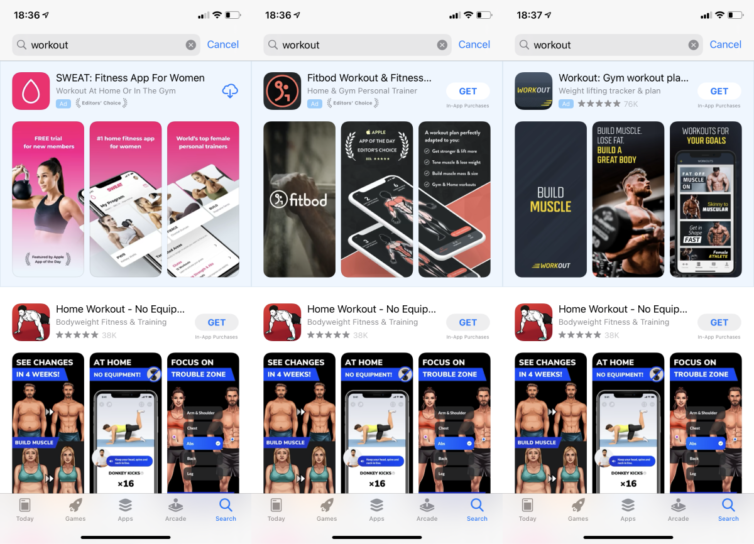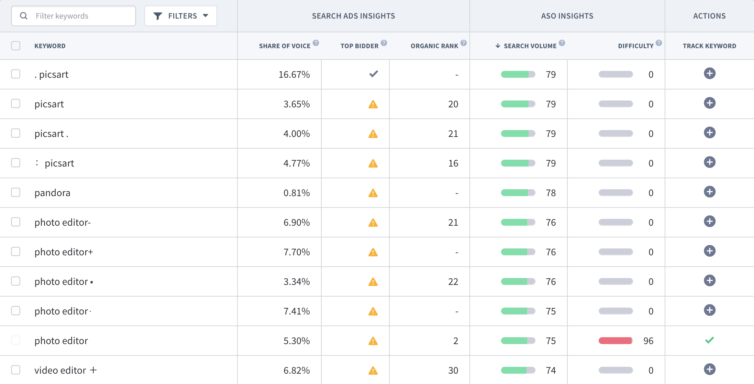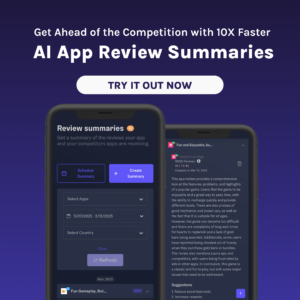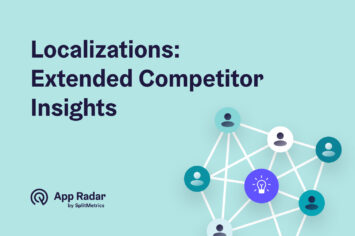How to Strategically Budget for App Store Advertising
So far, we’ve talked about what Apple Search Ads and Google App Campaign are and why they are essential to growing your apps. Besides having a highly optimized store listing, there are a couple of other factors that make or break your paid user acquisition campaigns.

The first one is budget, and the second is measuring performance. We’re going to learn everything about the first one now. Ready to dive into strategically budgeting for app store advertising?
First Step: Have an Overall Budget
The very first step of strategic ad budgeting is actually to have an allocated monthly budget. Don’t think you can go in and just wing it. That’s not going to work here. App store advertising is a paid user acquisition channel, which means you’ll need to spend in order to see results. Set aside a financial plan and budget specifically for advertising. This will usually be a portion of your overall marketing plan and budget.
Not having a clearly laid out app advertising budget will get you into trouble. You might end up underspending and, thus, underperforming. Or even worse. You could overspend and still underperform. In addition, having a specific budget will make measuring results and further optimizing your ads much easier. Moreover, Apple Search Ads and Google App Campaign require you to input a budget before setting your ads live.

We recommend having at least $500 a month to start with. Ad budgets will differ depending on your financial resources, how competitive your industry is, and even on the country you are going to advertise. But you can always build up to a bigger ad budget.
The budget that you’ll set in the Apple Search Ads and Google App Campaign dashboards are daily budgets. Don’t forget to calculate accordingly.
Budget Recommendation for Google App Campaign
There are 2 main types of Google App Campaign ads you can run. When you’re optimizing for “Install Volume,” Google recommends setting a daily budget that is at least 50 times your target CPI (cost-per-install). When you’re optimizing for “In-app actions,” Google says to have a budget that is at least 10 times your target CPA (cost-per-acquisition).
Budget Recommendation for Apple Search Ads
Apple will only show your ads in the Apple App Store until you reach your daily cap. Once this happens, your ads will no longer be shown, and the reset occurs on the next day. Apple recommends increasing your daily cap to gain more impressions and downloads if you’re already hitting your daily cap every day and achieving your ROI goals.
If you are a smaller or indie developer, understandably, you’ll spend less than the big players. However, that doesn’t mean you’ll always come second to them. The great thing about Apple Search Ads and Google App Campaign is that both platforms give you a chance to compete against larger developers and publishers. That’s because they work on a bid system. This is where strategic budgeting really comes into play.
Leverage the Bid System in App Store Advertising
Apple Search Ads and Google App Campaign split ad spots amongst advertisers according to bids. A bid is how much you’re willing to pay for a tap on your ad. In other words, it’s the CPT (cost-per-tap). Several advertisers are able to bid on the same ad slot, meaning keyword.

In the image above, a variety of app ads appear for the same keyword, “workout”. Each advertiser who is bidding for the keyword “workout” is competing for that singular ad spot. The highest bidder gets seen in the ad spot most often. They have the largest share of ad impressions, also known as Share of Voice (SOV).
Alright, now you’re probably wondering how do you know if you are the highest bidder or what your Share of Voice is for specific keywords. Don’t worry! There’s a simple way to do so. App Radar’s Apple Search Ads Intelligence will tell you if you are the top bidder and show you every advertiser’s Share of Voice for priority keywords.

To get the most out of your Apple Search Ads and Google App Campaign budget, stay vigilant and tweak your bids when necessary. Here’s how.
Adjusting Bids for Apple Search Ads
Apple will give you a suggested bid, also known as CPT (cost-per-tap), that you can place for your chosen keywords. However, if you are on a strict budget, we’d suggest starting with a $0.50 CPT to figure out a baseline and then adjusting as you go. If you are less risk-averse, you could also start with higher bids and continuously lower those.
There are 3 metrics that will tell you if and when you should adjust your Apple Search Ads budget: TTR (tap-through-rate), CVR (conversion rate), and CPA (cost-per-acquisition).
- TTR is when a person taps on your ad
- CVR is when an ad viewer downloads your app or engages with your app
- CPA is the average cost to acquire a user
These metrics won’t look the same for every Apple Search Ads campaign that you run. Brand campaigns might have a lower TTR but higher CVR. General campaigns may have a higher TTR but lower CVR. Because of this, you should analyze each campaign separately. Here are a couple of situations where you could adjust your Apple Search Ads bid amount.
Increase your CPT bid when:
- Your ads are matching relevant keywords, and you see high CVR;
- You have a CVR below your CPA goal;
- You see low TTR, CVR, and impressions for high volume keywords that are relevant to your app.
Decrease your CPT bid when:
- You see a keyword with high TTR but low CVR, and it generates installs over your CPA Goal.
In addition to adjusting CPT bids, you can also adjust your CPA goal. Apple recommends raising CPA if your ads are seeing low impressions. Low CPAs can result in losing the bid auction.
Adjusting Bids for Google App Campaign
Remember, Google App Campaign automatically optimizes your ads for you. As a result, you have to give the algorithm a bit of time to run tests, collect data, and make changes. If you react too quickly or too rashly, you’ll end up harming the optimization of your campaign.
Don’t worry if your ads are not resulting in enough installs or your CPI (cost-per-install) is too high at the start. Let Google run it for at least 2-4 weeks before making any budget adjustments. Google needs the 2-4 weeks to optimize not only your ad creatives and ad placements but also your ad bids.

After the campaign has run for the allotted time, you can adjust your bids. However, avoid making large changes. Google’s machine learning will have to re-optimize your entire campaign if the adjustments are too drastic. Instead, opt for bid increases or decreases in smaller increments. Small changes enable Google to keep optimizing your campaigns without having to reset what its algorithm has already learned.
Summary of App Store Advertising Budgets
Dealing with budgets is never a simple task. It takes a lot of trial and error before hitting the sweet spot. That’s why we’re here to help. Our app marketing team has years of experience with both Apple Search Ads and Google App Campaign. Contact us today to get started with growing your apps!

